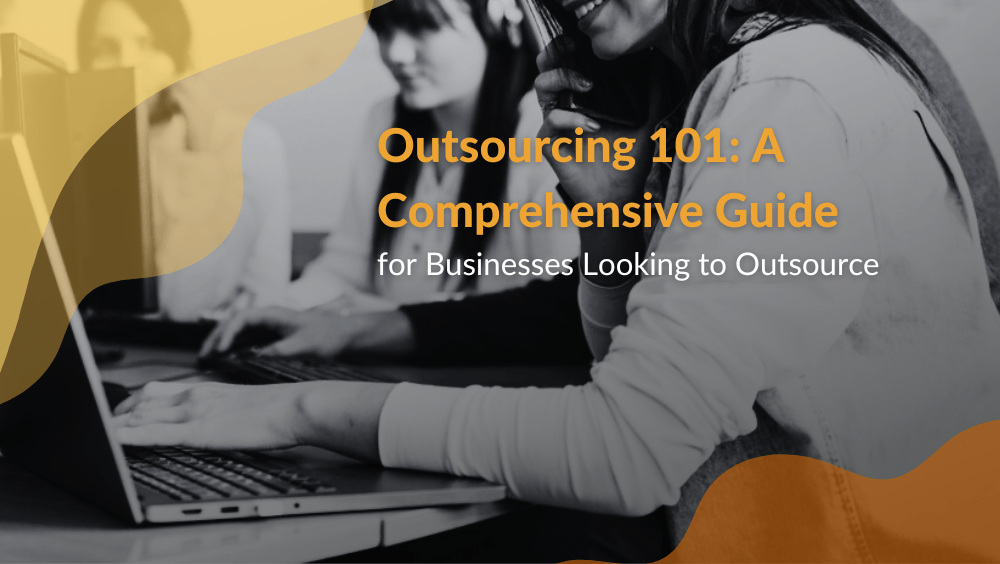Outsourcing has become a powerful strategy for businesses seeking to enhance efficiency. However, it’s not going to be the case if you can’t do it right. For your organization to significantly reduce costs, and gain competitive advantages, you need to find a good outsourcing partner!
Make sure that you take these critical steps to ensure success!
Here’s a comprehensive guide listing 50 things businesses should do right before outsourcing.
1. Define clear objectives
Clearly outline the goals you want to achieve with outsourcing, such as cost reduction, access to expertise, or improved focus on core activities.
2. Conduct a needs assessment
Just because outsourcing is seemingly good for businesses doesn’t mean all your functions should be outsourced. Assess which specific processes would benefit the most from outsourcing, and determine how outsourcing aligns with your overall business strategy.
3. Analyze costs
Evaluate the potential cost savings of outsourcing versus in-house operations, considering all direct and indirect costs.
4. Identify core competencies
Identify your company’s core competencies and ensure that these critical functions remain in-house. Remember, you are getting an outsourcing partner so you can focus on your more strategic tasks.
5. Conduct due diligence and research potential providers
Conduct thorough research on potential outsourcing providers. Look at their track records, expertise, and reputation in the industry!
6. Assess provider capabilities
Evaluate the technical and operational capabilities of potential providers to ensure they can meet your business needs. They would have a specific area of expertise, so see to it that it’s aligned with what you need.
7. Check references
Obtain and check references from other clients who have used the outsourcing providers you are considering. It’s best to get real testimonials!
8. Review the financial stability of your preferred outsourcing partner
Assess the financial stability of potential providers to ensure they have the resources to fulfill their commitments over the long term.
9. Evaluate security measures
Examine the security measures and protocols of potential providers to ensure they can protect your sensitive data.
10. Understand legal and compliance issues
Ensure potential providers comply with relevant laws and regulations in both your country and theirs.
11. Develop a transition plan
Create a detailed plan for transitioning processes or functions to the outsourcing provider, including timelines and milestones.
12. Establish clear communication channels
Set up clear communication channels and protocols to facilitate smooth interactions with the outsourcing provider. These channels should be maintained regularly.
13. Define Service Level Agreements (SLAs)
Develop comprehensive SLAs that outline performance metrics, quality standards, and penalties for non-compliance.
14. Set clear expectations
Ensure that both parties have a mutual understanding of the expected outcomes and deliverables. This is to ensure that everything is up to your standards.
15. Outline all reporting requirements
Specify the reporting requirements and frequency to monitor the performance and progress of the outsourced functions.
16. Plan for knowledge transfer
Develop a plan for transferring knowledge and processes to the outsourcing provider to minimize disruption. Ideally, this download should come before the actual turnover of tasks.
17. Assess cultural fit
Evaluate the cultural fit between your company and the outsourcing provider to ensure smooth collaboration.
18. Conduct a thorough risk assessment
Identify potential risks associated with outsourcing and develop strategies to mitigate them. This would prepare you if ever things take a turn for the worst.
19. Ensure IP Protection
Establish measures to protect your intellectual property, including confidentiality agreements and IP clauses in contracts.
20. Prepare for Change Management
Develop a change management plan to address the impact of outsourcing on your internal teams and processes.
21. Train your internal teams
Provide training to your internal teams on how to work effectively with the outsourcing provider. There should be a smooth collaboration between the two to ensure success.
22. Define roles and responsibilities
Clearly define the roles and responsibilities of both your internal team and the outsourcing provider.
23. Set a realistic budget
Establish a realistic budget for outsourcing, including contingency funds for unforeseen expenses.
24. Develop a Governance Structure
Create a governance structure to oversee the outsourcing relationship and ensure alignment with business goals.
25. Monitor performance regularly
Set up regular performance reviews to assess the provider’s performance against SLAs and other agreed metrics. Upon review of said performance, your business would then be guided and see if you are really being more efficient with work.
26. Foster a collaborative relationship as it will help you in the long run
Encourage a collaborative relationship with the outsourcing provider to enhance communication and problem-solving. Things will be easier if you have a harmonious relationship!
27. Establish escalation procedures
Develop clear procedures for escalating issues to ensure timely resolution.

28. Plan for contingencies
Prepare contingency plans for potential disruptions in service or other emergencies. Don’t rely solely on the outsourcing partner!
29. Review contract terms carefully
While it is already a given, it is recommended for a business to thoroughly review and negotiate contract terms to ensure they are favorable and protect your interests.
30. Consider having a legal counsel
Engage legal counsel to review contracts and ensure compliance with all legal requirements.
31. Set clear payment terms
Agree on clear payment terms, including schedules, amounts, and conditions for payment.
32. Ensure technological compatibility
Verify that your technology infrastructure is compatible with that of the outsourcing provider. This is especially critical for companies with more demanding requirements.
33. Plan for technology integration
Develop a plan for integrating your systems with those of the outsourcing provider to ensure seamless operations.
34. Test the partnership first
What this means is that your business should consider starting with a small pilot project. This would allow you to test the partnership before fully committing to a long-term arrangement. You’d get a sense check, and would also benefit from this risk assessment strategy.
35. Evaluate the provider’s training programs
Assess the training programs of the outsourcing provider to ensure their staff is well-equipped to handle your tasks.
36. Understand the provider’s turnover rates
Investigate the employee turnover rates at the outsourcing provider to gauge stability and reliability.
37. Define the termination clauses
Clearly define termination clauses in the contract to protect your business in case the relationship needs to end.
38. Plan for repatriation
Develop a plan for repatriating functions back in-house or to another provider if the outsourcing arrangement ends. Make sure you also have that level of control.
39. Monitor market trends
Stay informed about market trends and technological advancements that could impact your outsourcing strategy.
40. Establish quality control measures
Implement quality control measures to monitor the quality of work provided by the outsourcing partner.
41. Regularly review SLAs
Regularly review and update SLAs to reflect changing business needs and performance expectations.
42. Build trust
Work on building trust with your outsourcing provider through transparency and consistent communication.
43. Encourage innovation and be open to new ideas.
Encourage your outsourcing provider to suggest innovative solutions and improvements. You’ve already taken the decision to outsource your tasks, so you might as well make the most out of it, right?

44. Assess cultural differences
Consider cultural differences and how they might impact communication and collaboration with the provider. See if there is anything you need to adjust in your ways of working.
45. Develop a feedback loop
Create a feedback loop to continuously improve the outsourcing relationship and address issues promptly.
46. Prioritize data privacy
Ensure that the outsourcing provider prioritizes data privacy and complies with relevant data protection regulations.
47. See if the provider is free from any issues or scandals
Perform due diligence on the provider’s background, including their track record, client testimonials, and any past controversies.
48. Plan for service continuity
Just like how leaders should properly plan for transitions, ensure the provider has a robust service continuity plan to handle potential disruptions and maintain operations.
49. Evaluate long-term viability
Consider the long-term viability of the outsourcing provider, including their plans for growth and sustainability.
50. Align with Business Goals
At the end of the day, it should be a regular task to ensure that outsourcing aligns with your overall business goals. Is it positively contributing to your strategic objectives?
Outsourcing can offer significant benefits for businesses
However, success depends on thorough preparation and careful management. By following these 50 steps before outsourcing, companies can mitigate risks, ensure smooth transitions, and build strong, productive relationships with their outsourcing providers.
KamelBPO can help your business drive growth, innovation, and competitive advantage in today’s dynamic market environment! Contact us today to learn more about our tailor-fit solutions.

